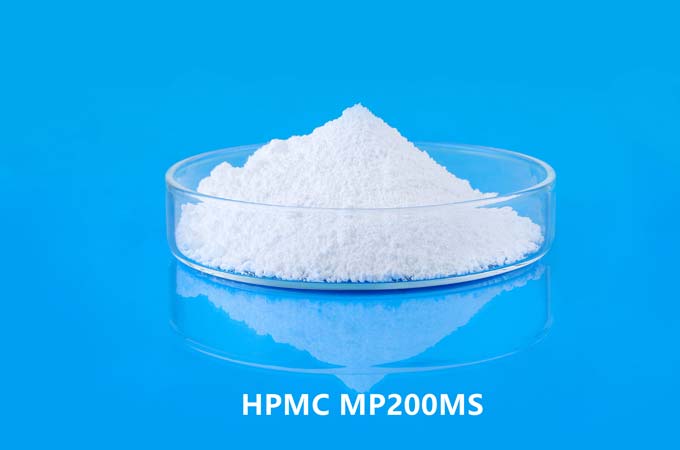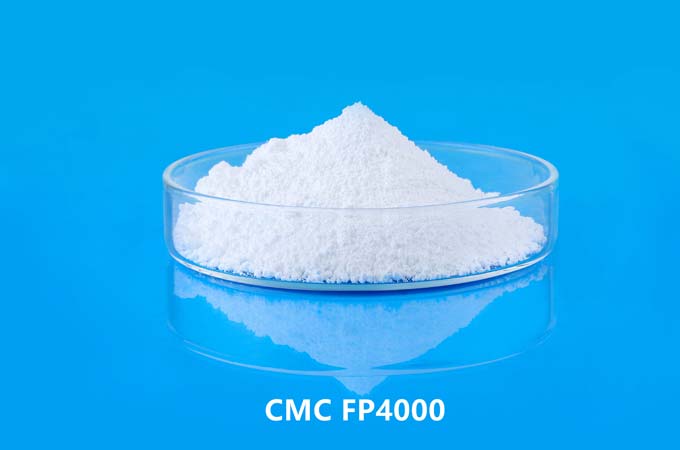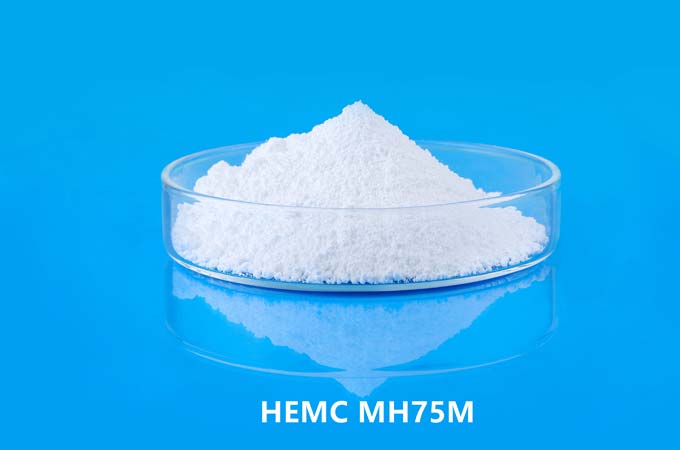1. Water Retaining Agent
Water retaining agent is a key admixture to improve the water retention performance of dry-mixed mortar, and it is also one of the key admixtures to determine the cost of dry-mixed mortar materials.
1.1 Cellulose Ether
Cellulose ether is a general term for a series of products produced by the reaction of alkali cellulose and etherifying agent under certain conditions. Alkali cellulose is replaced by different etherifying agents to obtain different cellulose ethers. According to the ionization properties of substituents, cellulose ethers can be divided into two categories: ionic (such as carboxymethyl cellulose) and non-ionic (such as methyl cellulose). According to the type of substituent, cellulose ether can be divided into monoether (such as methyl cellulose) and mixed ether (such as hydroxypropyl methyl cellulose). According to different solubility, it can be divided into water-soluble (such as hydroxyethyl cellulose) and organic solvent-soluble (such as ethyl cellulose), etc. Dry-mixed mortar is mainly water-soluble cellulose, and water-soluble cellulose is divided into instant type and surface treated delayed dissolution type.
The mechanism of action of cellulose ether in mortar is as follows:
(1) After the cellulose ether in the mortar is dissolved in water, the effective and uniform distribution of the cementitious material in the system is ensured due to the surface activity, and the cellulose ether, as a protective colloid, "wraps" the solid particles and A layer of lubricating film is formed on its outer surface, which makes the mortar system more stable, and also improves the fluidity of the mortar during the mixing process and the smoothness of construction.
(2) Due to its own molecular structure, the cellulose ether solution makes the water in the mortar not easy to lose, and gradually releases it over a long period of time, endowing the mortar with good water retention and workability.
1.1.1 Methylcellulose (MC)
After the refined cotton is treated with alkali, cellulose ether is produced through a series of reactions with methane chloride as etherification agent. Generally, the degree of substitution is 1.6~2.0, and the solubility is also different with different degrees of substitution. It belongs to non-ionic cellulose ether.
(1) Methylcellulose is soluble in cold water, and it will be difficult to dissolve in hot water. Its aqueous solution is very stable in the range of pH=3~12. It has good compatibility with starch, guar gum, etc. and many surfactants. When the temperature reaches the gelation temperature, gelation occurs.
(2) The water retention of methyl cellulose depends on its addition amount, viscosity, particle fineness and dissolution rate. Generally, if the addition amount is large, the fineness is small, and the viscosity is large, the water retention rate is high. Among them, the amount of addition has the greatest impact on the water retention rate, and the level of viscosity is not directly proportional to the level of water retention rate. The dissolution rate mainly depends on the degree of surface modification of cellulose particles and particle fineness. Among the above cellulose ethers, methyl cellulose and hydroxypropyl methyl cellulose have higher water retention rates.
(3) Changes in temperature will seriously affect the water retention rate of methyl cellulose. Generally, the higher the temperature, the worse the water retention. If the mortar temperature exceeds 40°C, the water retention of methyl cellulose will be significantly reduced, seriously affecting the construction of the mortar.
(4) Methyl cellulose has a significant effect on the construction and adhesion of mortar. The "adhesion" here refers to the adhesive force felt between the worker's applicator tool and the wall substrate, that is, the shear resistance of the mortar. The adhesiveness is high, the shear resistance of the mortar is large, and the strength required by the workers in the process of use is also large, and the construction performance of the mortar is poor. Methyl cellulose adhesion is at a moderate level in cellulose ether products.
1.1.2 Hydroxypropyl methylcellulose (HPMC)
Hydroxypropyl methylcellulose is a cellulose variety whose output and consumption have been increasing rapidly in recent years. It is a non-ionic cellulose mixed ether made from refined cotton after alkalization, using propylene oxide and methyl chloride as etherification agent, through a series of reactions. The degree of substitution is generally 1.2~2.0. Its properties are different due to the different ratios of methoxyl content and hydroxypropyl content.
(1) Hydroxypropyl methylcellulose is easily soluble in cold water, and it will encounter difficulties in dissolving in hot water. But its gelation temperature in hot water is significantly higher than that of methyl cellulose. The solubility in cold water is also greatly improved compared with methyl cellulose.
(2) The viscosity of hydroxypropyl methylcellulose is related to its molecular weight, and the larger the molecular weight, the higher the viscosity. Temperature also affects its viscosity, as temperature increases, viscosity decreases. However, its high viscosity has a lower temperature effect than methyl cellulose. Its solution is stable when stored at room temperature.
(3) The water retention of hydroxypropyl methylcellulose depends on its addition amount, viscosity, etc., and its water retention rate under the same addition amount is higher than that of methyl cellulose.
(4) Hydroxypropyl methylcellulose is stable to acid and alkali, and its aqueous solution is very stable in the range of pH=2~12. Caustic soda and lime water have little effect on its performance, but alkali can speed up its dissolution and increase its viscosity. Hydroxypropyl methylcellulose is stable to common salts, but when the concentration of salt solution is high, the viscosity of hydroxypropyl methylcellulose solution tends to increase.
(5) Hydroxypropyl methylcellulose can be mixed with water-soluble polymer compounds to form a uniform and higher viscosity solution. Such as polyvinyl alcohol, starch ether, vegetable gum, etc.
(6) Hydroxypropyl methylcellulose has better enzyme resistance than methylcellulose, and its solution is less likely to be degraded by enzymes than methylcellulose.
(7) The adhesion of hydroxypropyl methylcellulose to mortar construction is higher than that of methylcellulose.
1.1.3 Hydroxyethylcellulose (HEC)
It is made from refined cotton treated with alkali, and reacted with ethylene oxide as etherification agent in the presence of acetone. The degree of substitution is generally 1.5~2.0. Has strong hydrophilicity and is easy to absorb moisture
(1) Hydroxyethyl cellulose is soluble in cold water, but it is difficult to dissolve in hot water. Its solution is stable at high temperature without gelling. It can be used for a long time under high temperature in mortar, but its water retention is lower than that of methyl cellulose.
(2) Hydroxyethyl cellulose is stable to general acid and alkali. Alkali can accelerate its dissolution and slightly increase its viscosity. Its dispersibility in water is slightly worse than that of methyl cellulose and hydroxypropyl methyl cellulose. .
(3) Hydroxyethyl cellulose has good anti-sag performance for mortar, but it has a longer retarding time for cement.
(4) The performance of hydroxyethyl cellulose produced by some domestic enterprises is obviously lower than that of methyl cellulose due to its high water content and high ash content.
1.1.4 Carboxymethylcellulose (CMC)
Ionic cellulose ether is made from natural fibers (cotton, etc.) after alkali treatment, using sodium monochloroacetate as etherification agent, and undergoing a series of reaction treatments. The degree of substitution is generally 0.4~1.4, and its performance is greatly affected by the degree of substitution.
(1) Carboxymethyl cellulose is more hygroscopic, and it will contain more water when stored under general conditions.
(2) Carboxymethyl cellulose aqueous solution will not produce gel, and the viscosity will decrease with the increase of temperature. When the temperature exceeds 50°C, the viscosity is irreversible.
(3) Its stability is greatly affected by pH. Generally, it can be used in gypsum-based mortar, but not in cement-based mortar. When highly alkaline, it loses viscosity.
(4) Its water retention is far lower than that of methyl cellulose. It has a retarding effect on gypsum-based mortar and reduces its strength. However, the price of carboxymethyl cellulose is significantly lower than that of methyl cellulose.
1.2 Starch Ether
Starch ethers used in mortars are modified from natural polymers of some polysaccharides. Such as potatoes, corn, cassava, guar beans and so on.
1.2.1 Modified starch
Starch ether modified from potato, corn, cassava, etc. has significantly lower water retention than cellulose ether. Due to the different degree of modification, the stability to acid and alkali is different. Some products are suitable for use in gypsum-based mortars, while others can be used in cement-based mortars. The application of starch ether in mortar is mainly used as a thickener to improve the anti-sagging property of mortar, reduce the adhesion of wet mortar, and prolong the opening time.
Starch ethers are often used together with cellulose, so that the properties and advantages of these two products complement each other. Since starch ether products are much cheaper than cellulose ether, the application of starch ether in mortar will bring about a significant reduction in the cost of mortar formulations.
1.2.2 Guar ether
Guar gum ether is a kind of starch ether with special properties, which is modified from natural guar beans. Mainly by the etherification reaction of guar gum and acrylic functional group, a structure containing 2-hydroxypropyl functional group is formed, which is a polygalactomannose structure.
(1) Compared with cellulose ether, guar gum ether is more soluble in water. The properties of pH guar ethers are essentially unaffected.
(2) Under the conditions of low viscosity and low dosage, guar gum can replace cellulose ether in an equal amount, and has similar water retention. But the consistency, anti-sag, thixotropy and so on are obviously improved.
(3) Under the conditions of high viscosity and large dosage, guar gum cannot replace cellulose ether, and the mixed use of the two will produce better performance.
(4) The application of guar gum in gypsum-based mortar can significantly reduce the adhesion during construction and make the construction smoother. It has no adverse effect on the setting time and strength of gypsum mortar.
(5) When guar gum is used in cement-based masonry and plastering mortar, it can replace cellulose ether in an equal amount, and endow the mortar with better sagging resistance, thixotropy and smoothness of construction.
(6) Guar gum can also be used in products such as tile adhesives, ground self-leveling agents, water-resistant putty, and polymer mortar for wall insulation.
(7) Since the price of guar gum is significantly lower than that of cellulose ether, the use of guar gum in mortar will significantly reduce the cost of product formulation.
1.2.3 Modified mineral water-retaining thickener
The water-retaining thickener made of natural minerals through modification and compounding has been applied in China. The main minerals used to prepare water-retaining thickeners are: sepiolite, bentonite, montmorillonite, kaolin, etc. These minerals have certain water-retaining and thickening properties through modification such as coupling agents. This kind of water-retaining thickener applied to mortar has the following characteristics.
(1) It can significantly improve the performance of ordinary mortar, and solve the problems of poor operability of cement mortar, low strength of mixed mortar, and poor water resistance.
(2) Mortar products with different strength levels for general industrial and civil buildings can be formulated.
(3) The material cost is significantly lower than that of cellulose ether and starch ether.
(4) The water retention is lower than that of the organic water retention agent, the dry shrinkage value of the prepared mortar is larger, and the cohesiveness is reduced.
2. Redispersible Polymer Rubber Powder
Redispersible rubber powder is processed by spray drying of special polymer emulsion. In the process of processing, protective colloid, anti-caking agent, etc. become indispensable additives. The dried rubber powder is some spherical particles of 80~100mm gathered together. These particles are soluble in water and form a stable dispersion slightly larger than the original emulsion particles. This dispersion will form a film after dehydration and drying. This film is as irreversible as the general emulsion film formation, and will not redisperse when it meets water. Dispersions.
Redispersible rubber powder can be divided into: styrene-butadiene copolymer, tertiary carbonic acid ethylene copolymer, ethylene-acetate acetic acid copolymer, etc., and based on this, silicone, vinyl laurate, etc. are grafted to improve performance. Different modification measures make the redispersible rubber powder have different properties such as water resistance, alkali resistance, weather resistance and flexibility. Contains vinyl laurate and silicone, which can make the rubber powder have good hydrophobicity. Highly branched vinyl tertiary carbonate with low Tg value and good flexibility.
When these kinds of rubber powders are applied to mortar, they all have a delaying effect on the setting time of cement, but the delaying effect is smaller than that of direct application of similar emulsions. In comparison, styrene-butadiene has the largest retarding effect, and ethylene-vinyl acetate has the smallest retarding effect. If the dosage is too small, the effect of improving the performance of mortar is not obvious.
3. Fiber Material
3.1 Wood Fiber
Wood fiber is made of plants as the main raw material and processed by a series of technologies, and its performance is different from that of cellulose ether. The main properties are:
(1) Insoluble in water and solvents, and also insoluble in weak acid and weak base solutions
(2) Applied in mortar, it will overlap into a three-dimensional structure in a static state, increase the thixotropy and sag resistance of the mortar, and improve the constructability.
(3) Due to the three-dimensional structure of wood fiber, it has the property of "water-locking" in the mixed mortar, and the water in the mortar will not be easily absorbed or removed. But it does not have the high water retention of cellulose ether.
(4) The good capillary effect of wood fiber has the function of "water conduction" in the mortar, which makes the surface and internal moisture content of the mortar tend to be consistent, thereby reducing cracks caused by uneven shrinkage.
(5) Wood fiber can reduce the deformation stress of the hardened mortar and reduce the shrinkage and cracking of the mortar.
(6) The long-term performance change law of wood fiber in mortar is not clear.
3.2 Polypropylene Fiber
Polypropylene fiber is made of polypropylene as raw material and appropriate amount of modifier. The fiber diameter is generally about 40 microns, the tensile strength is 300~400mpa, the elastic modulus is ≥3500mpa, and the ultimate elongation is 15~18%. Its performance characteristics:
(1) Polypropylene fibers are uniformly distributed in three-dimensional random directions in the mortar, forming a network reinforcement system. If 1 kg of polypropylene fiber is added to each ton of mortar, more than 30 million monofilament fibers can be obtained.
(2) Adding polypropylene fiber to the mortar can effectively reduce the shrinkage cracks of the mortar in the plastic state. Whether these cracks are visible or not. And it can significantly reduce the surface bleeding and aggregate settlement of fresh mortar.
(3) For the mortar hardened body, polypropylene fiber can significantly reduce the number of deformation cracks. That is, when the mortar hardening body produces stress due to deformation, it can resist and transmit stress. When the mortar hardening body cracks, it can passivate the stress concentration at the tip of the crack and restrict the crack expansion.
(4) Efficient dispersion of polypropylene fibers in mortar production will become a difficult problem. Mixing equipment, fiber type and dosage, mortar ratio and its process parameters will all become important factors affecting dispersion.
4. Plastic Water Reducing Agent
Plastic water reducer is the most used admixture in cement concrete. Almost all water reducers are composed of surface active substances, and the performance of the water reducer is determined by the interface between the molecular structure of the surface active substances used and the cement particles. Because the cement particles have different polarities and attract each other during the hydration process, a lot of mixing water is wrapped to form a flocculation structure. In order to achieve satisfactory construction performance during use, it is often necessary to add more water to reduce the strength and other properties of the hardened body. After the superplasticizer is added to the cement slurry, its hydrophobic group is directional adsorbed on the surface of the cement particles with the same electrical property, which increases the zeta potential of the surface of the cement particles, makes the particles repel each other due to the same-sex static electricity, and destroys the cement particles. The flocculation structure effectively disperses the cement particles, releases the free water in the flocculation structure, and achieves the purpose of reducing water.
 English
English 日本語
日本語 français
français Deutsch
Deutsch Español
Español italiano
italiano русский
русский português
português العربية
العربية Türkçe
Türkçe Nederland
Nederland



